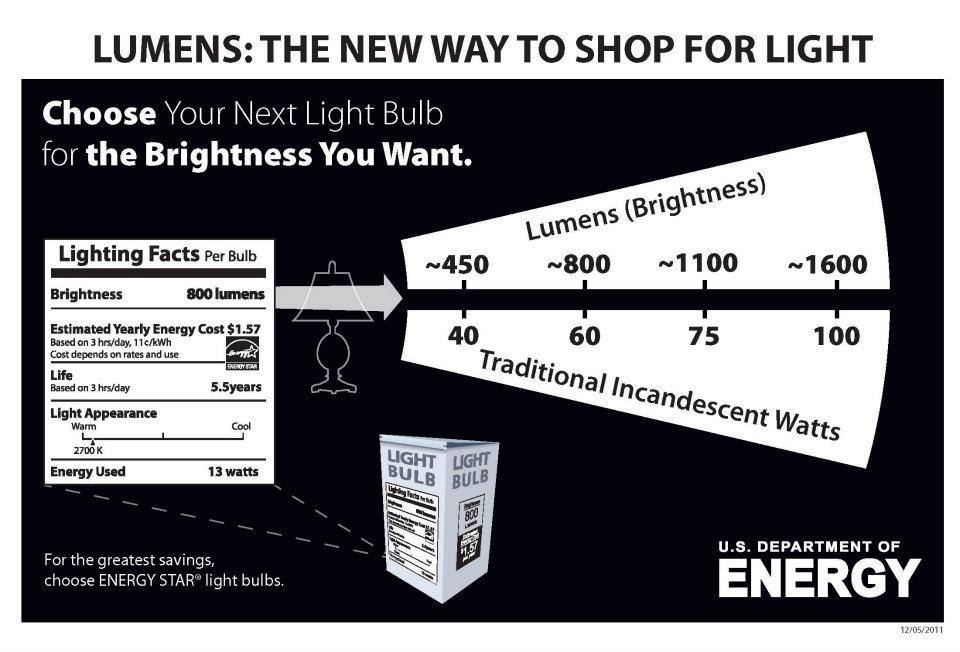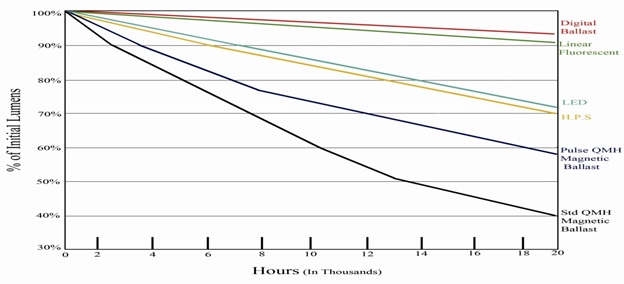|
Here
are things that you should know about what to look for in a LED
1.
Brightness
A standard 60
watt incandescent light bulb produces about 800 lumens. It
is important that the replacement choosing is based on the brightness, rather
than the watts you want and need for the replacement Bulb. The new way to shop
for light, when choosing LED to compare Light levels 
1.
Color
Temperature
Color
temperature is a measure of the color appearance of a light source which helps
describe the apparent "warmth" (red/yellow)) or "coolness"
(blue/white) of that light. Light sources below 3200 Kelvin (3200K) are
considered to be "warm;" while those above 4000K are considered to be
"cool" light sources.
2.
Color Rendering
Color rendering index (CRI) is the ability for any light source to render
colors accurately. The CRI scale goes from 1 to 100. A CRI of 85 is considered
to be very good, a CRI of 100 is considered perfect. LEDs in a warm white color
temperature are currently available with a CRI of 80.
3.
Efficacy
As with all light sources, the efficacy of LEDs is measured in
lumens/watt, the amount of light produced by one unit of power.
4.
Heat Generation
In fact, all light sources generate heat and LED lights are no different. Thus,
it is important that an LED fixture is well-designed with "heat
sinks" to adequately dissipate the heat that is created.
5.
Lifespan
LEDs
do not burn out like an incandescent light bulb. Instead they get progressively
dimmer over their lifetime until they no longer emit enough light to be useful.
An LED is generally considered to be no longer useful when it is emitting only
70% of the original amount of light the LED produced

|

